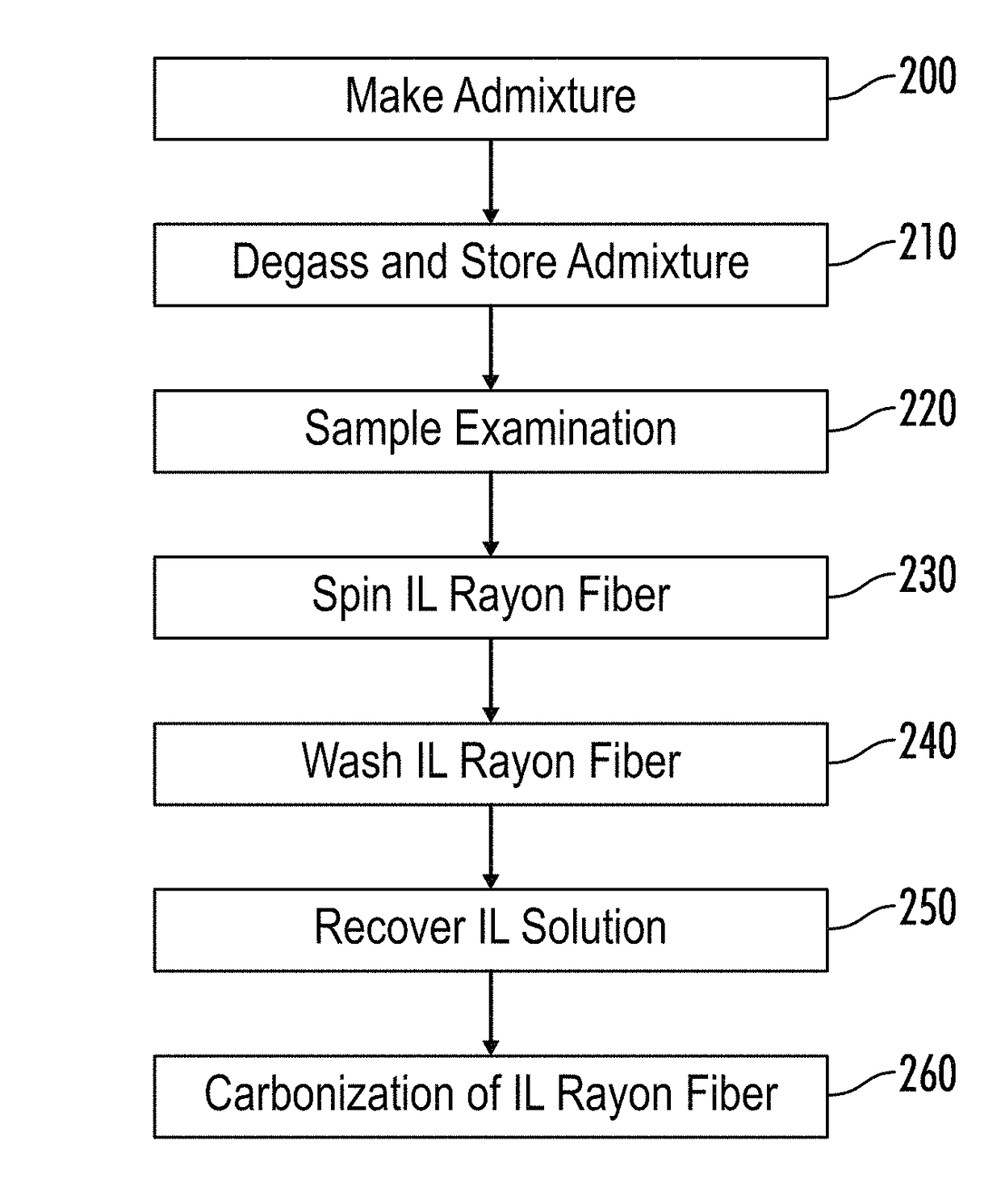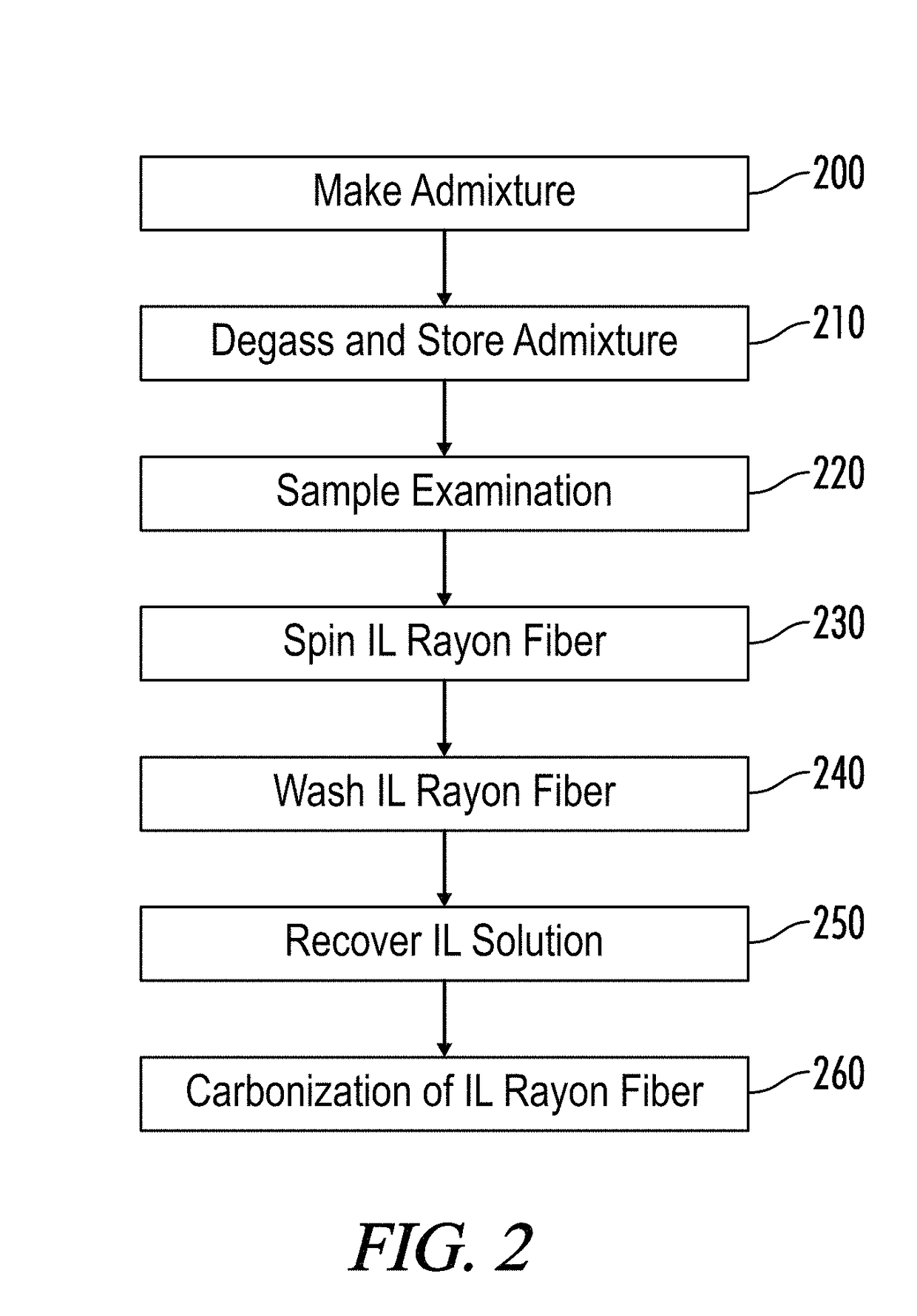Methods and systems for making carbon fibers for high temperature applications
a carbon fiber and high temperature technology, applied in fiber treatment, spinning solution filtering, textiles and paper, etc., can solve the problems of toxic waste products, inconvenient production of viscous rayon, and no longer commercially produced rayon in the united states
- Summary
- Abstract
- Description
- Claims
- Application Information
AI Technical Summary
Benefits of technology
Problems solved by technology
Method used
Image
Examples
Embodiment Construction
[0013]The present disclosure relates to methods and systems for the continuous production of cellulosic filament yarns with a compact, homogeneous structural morphology, and the low thermal conductivity carbon fibers produced by these methods. The disclosed methods utilize safe and recyclable ionic liquids (IL) to produce carbon fiber precursors from cellulose. In one embodiment, the fibers are produced by the carbonization of cellulose carbon fiber precursors. The filament yarns are critical components of high temperature applications, such as rocket nozzles for solid rocket motors and composite reinforcement in ablative heat shields. The fibers are manufactured from cellulose solutions in ionic fluids as part of a wet spinning process. The processing of the cellulose at near room temperature preserves the necessary degree of polymerization. The precursor fiber filaments have an increased tear resistance with simultaneously sufficient elongation, a round or crenulated cross-section...
PUM
| Property | Measurement | Unit |
|---|---|---|
| temperature | aaaaa | aaaaa |
| temperature | aaaaa | aaaaa |
| temperature | aaaaa | aaaaa |
Abstract
Description
Claims
Application Information
 Login to View More
Login to View More - Generate Ideas
- Intellectual Property
- Life Sciences
- Materials
- Tech Scout
- Unparalleled Data Quality
- Higher Quality Content
- 60% Fewer Hallucinations
Browse by: Latest US Patents, China's latest patents, Technical Efficacy Thesaurus, Application Domain, Technology Topic, Popular Technical Reports.
© 2025 PatSnap. All rights reserved.Legal|Privacy policy|Modern Slavery Act Transparency Statement|Sitemap|About US| Contact US: help@patsnap.com



